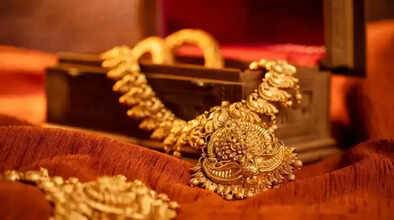How Pure Is Your Gold? 8 Simple Ways to Test Authenticity at Home

Gold has been valued for centuries as a symbol of wealth, investment, and cultural heritage. But with rising prices and the increasing demand for jewelry, fake or impure gold has also made its way into the market. This makes it crucial for buyers to know how to check the purity of gold before making any purchase. Thankfully, there are a few reliable methods you can use right at home to identify whether your gold is genuine.
In India, the purity of gold is measured in carats (K), ranging from 14K to 24K. The higher the carat, the purer the gold. For example, 24K gold is almost 99.9% pure, while 22K or 18K gold contains a mixture of gold and other metals like copper, silver, or nickel for added strength. Here are eight simple methods to test the authenticity of your gold jewelry.
1. Identify Purity by Carat Markings
Every piece of gold jewelry comes with a carat (K) marking that indicates its purity. For instance, 24K represents pure gold, while 22K or 18K suggests a mix of gold with other metals. Always check the carat stamp on your jewelry before buying.
2. Look for the BIS Hallmark
In India, the Bureau of Indian Standards (BIS) certifies gold jewelry. A hallmark symbol in the shape of a triangle indicates that the jewelry has been tested in a certified laboratory. This hallmark guarantees authenticity and ensures that the gold meets standard purity levels.
3. Check Numeric Markings on Jewelry
You may notice markings like 22K916 or 18K750 engraved on jewelry pieces. These numbers reveal the percentage of pure gold present. For example, 916 means 91.6% pure gold, with the remaining portion made up of alloyed metals.
4. Perform the Magnet Test
Gold is not magnetic. If your jewelry sticks to a magnet, it likely contains a high percentage of other metals. While this test is not foolproof, it gives you a quick way to identify possible adulteration.
5. Drop It in Water
A simple water test can also help. Pure gold is dense and will sink to the bottom of a glass of water, while impure or lightweight alloys may float or settle slowly.
6. Acid Test at Jewelry Stores
The acid test is one of the oldest and most reliable methods to check gold purity. Jewelers apply specific acids to a sample of gold—different carats react differently. This test, however, should be conducted by professionals as handling acids at home can be unsafe.
7. Measure Weight and Volume
Pure gold is denser and heavier compared to adulterated versions. By carefully measuring the weight and volume of your jewelry using a precise scale, you can estimate whether it is made of genuine gold or not.
8. Professional Lab Testing
Finally, the most accurate way to confirm the purity of your gold is through professional testing at a certified jewelry laboratory. While home methods provide useful indications, lab reports guarantee authenticity and protect your investment.
Final Thoughts
Gold is not just a precious metal—it is a financial safeguard and a deeply rooted cultural asset in India. Whether you are buying jewelry for personal use, weddings, or investment, knowing how to test its authenticity is essential. From simple at-home checks like the magnet and water tests to professional lab certifications, these methods empower you to make safer and smarter purchases.
By following these eight methods, you can ensure that your gold is as pure and valuable as promised, giving you peace of mind and confidence in every piece you own.

